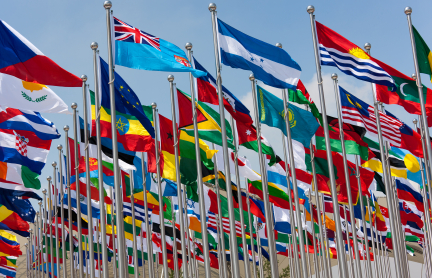(c) Trade liberalization
Syllabus: With reference to specific examples, evaluate each of the following as a means of achieving economic growth and economic development.
 Trade Liberalization is a term used to describe trade strategies that attempt to
Trade Liberalization is a term used to describe trade strategies that attempt to
open up the level of international trade, by the:
- removal of trade restrictions,
- devaluation of currencies,
- promoting exports and
- freeing up controlled prices.
Those institutions that support trade liberalization argue that such strategies result in rapid export and economic growth and provide a range of benefits including:
- The promotion of competition - LDCs specialize in the production and export of those goods and services where they hold a comparative advantage.
- Increases in efficiency as domestic exporters are forced to become more competitive.
- Increased profitability and higher incomes, inducing greater savings and investment.
- Encouraging foreign direct investment and inflows of overseas capital and enterprise.
- The freeing up of markets - the removal of subsidies and price controls reduces government costs, opportunities for corruption and growth in black markets.
These benefits appear positive for less developed countries and indeed such strategies have been very successful for a number of developing countries, that have demonstrated a capacity to compete in a competitive world market.
However, there are strong economic arguments against such strategies.
- Slow growth in demand for the traditional exports keeps export prices and export revenues depressed
- Cutting back import restrictions, such as tariffs, results in increases in the volume of goods and services imported from non LDCs countries. As a result, growth may cause a considerable worsening of the balance of payments current account situation. Additionally, growth may have the effect of reducing export revenues from the exports of goods and services of LDCs to non LDCs, where the high price elasticity is fairly low.
- Export promoting policies, focusing on the traditional primary products where the LDC hold a comparative advantage, will tend to direct resources away from those areas of industrial production that enable LDCs to produce and export goods and services with a higher value added and build up the skills and enterprise within the domestic economy.
The reality is that by looking at the performance of different countries over time the only conclusion we can draw is that some have benefited from adopting trade liberalizing policies, others have not. Indeed, the success of these policies for a particular country may also vary over time. It would appear that the success of the approach will depend upon where the country concerned is in their respective business cycle, the state of the global economy, the structure of productive sectors of the economy and the other macroeconomic policies that are being followed. Clearly what works for the goose, does not necessarily work for the gander!
Section 4.8 examines different development strategies using a number of case studies.
Multilateral agencies such as the World Bank, IMF and World Trade Organization are all advocates of trade liberalization.
The next section specifically revisits the World Trade Organization, the role it plays in liberalizing world trade and its impact on global economic growth and development.
Note the command word included in the syllabus statement so a Data Response Qd could be about this discussion
For example:
May 2012
Q5d: Using information from the text/data and your knowledge of economics,
discuss the view that African countries should increase their focus on trade
within Africa in order to increase economic development.